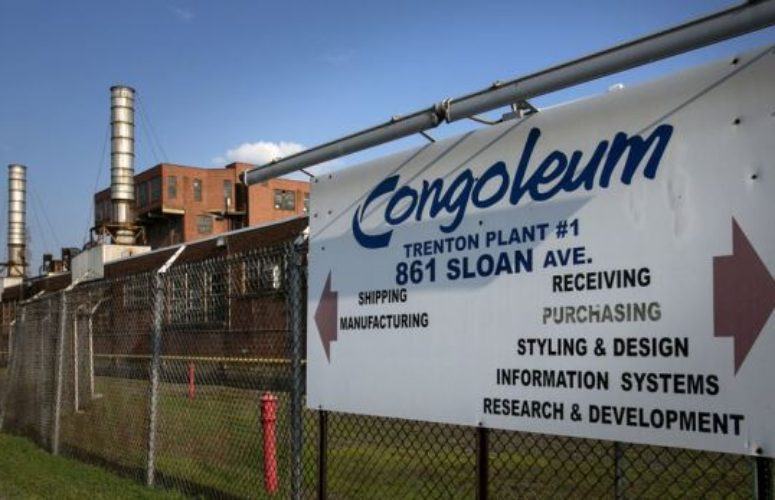
2018 Economic Forecasts
New Year Trends to Help Your Business
On Dec 27, 2017Meteorologists at times bemoan the fact that predicting the weather consists of so many in-flux variables that, even with the assistance of powerful computers, these experts may struggle to determine if, quite literally, tomorrow will be sunny. Predicting New Jersey’s 2018 economy across various sectors and industries may be analogously challenging, yet this magazine has assembled by-lined prognostications from top-tier experts, who write about topics ranging from small business and banking, to healthcare costs and commercial real estate, for example. The reader will likely discover that these articles are a crucial tool for anybody seeking to conduct business in, with, or around the Garden State, in 2018.
 The Economy
The Economy
By James W. Hughes, Distinguished University Professor and Dean Emeritus of the Edward J. Bloustein School of Planning and Public Policy at Rutgers University
The performance of the New Jersey economy in 2018 will be determined by both evolving cyclical business conditions and adaptations to the structural disruptions that continuously altered the state’s economic foundations in the period following the Great Recession (December 2007 – June 2009). Cyclically, the United States enters 2018 with considerable economic momentum bolstered by seven straight years (2011 through 2017) of robust employment growth. By December 2017, the current US economic expansion, which started in June 2009, reached 102 months in length, just five months shy of becoming the second longest US expansion in history. Unless there is a significant external (global) economic shock, this milestone will be reached in May 2018, when the expansion will be 107 months old. Consequently, New Jersey is embedded in a record-setting cyclical period defined by a sustained national economic expansion not yet ready to expire due to old age.
The performance of New Jersey’s economy in 2018 will not only depend on cyclical momentum, but also on sustained adaptation to new long-term structural demographic, technological and economic realities. Demographically, 21st century millennial preeminence has supplanted 20th century baby-boom dominance. In 2018, the millennial generation will be between 18 and 38 years of age, standing as the prized labor-force commodity, eagerly sought by a corporate America that increasingly requires NextGen digital skills people. Where this talent wants to live, work and play increasingly drives locational decision making.
Technologically, 2017 was the 10th anniversary of the unveiling of Apple’s iPhone, which ushered in the smartphone revolution, severing fixed-in-place information technology umbilical cords. This has yielded the mobile-internet-untethered era which has further restructured 21st-century knowledge-based work, the shape of the economy, and where work can take place.
The combination of demographics and advancing information technology will continue to reconfigure the economic foundations of the state. The aging suburban office ecosystem was defined by – and for – the aging baby-boom generation. It reflected the routine, repetitive knowledge-based work processes of the last century, and has simultaneously been both contracting (the jettisoning of obsolete product) and adapting (the reconfiguring of inventory to satisfy the new workplace protocols). The success of the state’s 2018 economy will depend on the continued transformation of an aging 20th century suburban office inventory into 21st century economic assets sheltering new sophisticated knowledge-based work processes,
Similarly, the combination of demographic change and technological advancement is also disrupting one of New Jersey’s core economic competencies: shopping and consumption! Underway is the great retail apocalypse in the face of e-commerce. The upside of a potential retail brick-and-mortar meltdown is the vast and growing infrastructure foundation needs of e-commerce. Sustained additions to the state’s vast warehouse-fulfillment-distribution complex – the third largest in the nation – should characterize 2018. This is New Jersey’s most visible and successful adaptation to the new structural economic order that has emerged the past decade. Similar adaptations, underway in many of the state’s other economic sectors, will determine the success of 2018’s economy. Of course, actions in Washington and the new administration in Trenton, add many uncertainties to this economic outlook.
 Energy
Energy
By Richard Jackson, Executive Director, New Jersey Energy Coalition
One year after the 2016 presidential election, evidence is clear that the Trump administration’s pro-energy policies are having a positive effect on the nation’s energy future. Restrictive and costly regulations such as the Clean Power Plan, which stifled energy resource development, are being rolled back and replaced with policies that have led to a dramatic rise in domestic energy production. Projects long awaiting approvals are moving again. Domestic crude production is forecasted to hit 9.2 million barrels per day (bpd) in 2017. Natural gas production in 2017 exceeded 2016. Federal forecasters show the US being a net exporter of natural gas in 2017. Renewable energy production also rose in 2017.
The domestic energy picture for 2018 is bright. Federal officials predict greater fossil fuel production than 2017. Crude oil output could hit a record 10 million bpd. Gas production should approach 80 billion cubic feet per day (Bcfd). The US will again be a net exporter of natural gas. Greater supplies will have a beneficial effect on prices of commodities that propel our nation’s economy.
The election of Phil Murphy as New Jersey’s governor may change the state’s energy priorities in 2018. The governor-elect’s ambitious energy platform calls for a 100 percent clean energy portfolio by 2050. He has pledged to increase state investment in renewables and battery storage. The governor-elect also has committed to continue investments in electric and natural gas infrastructure-resiliency initiatives that ensure reliability. This is good news for the state’s utilities, which have invested billions of dollars hardening delivery systems since Superstorm Sandy. These efforts will continue. Also, New Jersey will likely re-enter the Regional Greenhouse Gas Initiative.
Low-cost, clean-burning and plentiful natural gas will have a positive effect on New Jersey’s cost of generating electricity. Today, more than 50 percent of the state’s electricity comes from gas-fired units. Here and elsewhere in the US, the need for natural gas is growing as it displaces coal- and oil-fired units, benefitting all consumers and the environment. This growth heightens the need for additional pipeline capacity. A prime opportunity here is the PennEast Pipeline, intended to provide additional supply to New Jersey’s growing natural gas market, assuring grid reliability, access to the lowest-cost supplies in the US, and continued emissions reductions.
Natural gas will continue to exert economic pressure on nuclear plants, which today provide nearly 20 percent of US, and 40 percent of New Jersey’s electricity. Also, 90 percent of New Jersey’s carbon-free power comes from nuclear. Nuclear operators across the country are cautioning that profits are being eroded by low-cost competing fuels, primarily gas. In 2018, expect continued discussion at the national, regional and state levels regarding the importance of an “all-of-the-above” fuel mix, that may require energy-market pricing reform, recognizing the environmental and resiliency benefits of nuclear.
Additional energy efficiency measures are also likely to be offered by the state’s utilities in 2018. These will help consumers lower energy bills, as well as help the state meet its clean energy goals. Regulators may also implement decoupling, whereby electric utilities’ profits are not eroded by energy-saving programs they may offer.
Renewable energy should continue growing. Today, the state ranks No. 3 in installed-solar capacity. Provided solar energy subsidies continue, and the cost of solar equipment continues to fall, expect to see additional utility-scale and private rooftop-solar investments. The governor-elect also has set an ambitious goal to have 3,500 MW of offshore wind by 2030. Initiatives to advance the electrification of the state’s transportation sector will also be pursued, and there remains a pressing need to find ways to store wind and solar energy until it is needed. For the foreseeable future, however, the state must rely on its traditional fuel sources, primarily nuclear and natural gas, coupled with renewables, to ensure reliable, affordable and clean energy.
 Small Business
Small Business
By Alfred J. Titone, New Jersey District Director, US Small Business Administration
One year after the 2016 Presidential Election, it is clear that tax reform and the elimination of burdensome regulations are high on President Trump’s agenda for 2018. If legislation moves forward, small business owners could be the big benefactors.
Preliminary forecasts tell us to expect 2.7 percent growth in GDP during 2018. However, it would not be unrealistic to see 3 percent growth or higher if corporate tax rates come down – provided Congress agrees to put an economic plan in place, and negotiate a deal to keep state and local tax deductions available.
SBA Approves a Record $869 Million in Loans in 2017
At the US Small Business Administration, we continue to monitor and measure loan output. It continues to be a key economic indicator for the agency and enables us to gauge how the small business economy is doing here in New Jersey. Through the analysis of our loan portfolio, we saw a 33 percent increase in loan approvals to New Jersey small business owners, and an 8 percent increase in the dollar amount. A total of 2,326 loans for a record $869 million went to small businesses in 2017, compared to the 1,755 loans for $806 million they received in 2016. It was the first time since 2008 that the New Jersey district office approved more than 2,000 loans. During that year, the office approved 2,270 loans for a little more than $493 million.
Fee Reduction Extended Through 2018
For the past five years, the SBA has focused on providing smaller loans to entrepreneurs. By offering small business owners no fees on loans of $125,000 or less, the SBA continues to help get more capital to communities where it is making a real difference, especially to our underserved communities who use these small dollar loans more frequently. The program has impacted the average loan amount. In 2017, the average SBA loan in New Jersey was for $374,000, significantly lower than 2016’s average of $459,000.
SBA Making a Difference
Five years ago, Mustafa Bhatti and his wife Aisha formed Home Towne Rx, an independent retail pharmacy. With the help of the Regional Business Assistance Corporation (RBAC), an SBA lender, the Bhattis were able to use an SBA Microloan for $30,000 and an SBA Community Advantage Loan for $100,000. During the initial start-up phase, those loans helped pay vendors for medication inventories and helped the couple with the working capital they needed to launch their venture.
Today, Home Towne Rx Pharmacy has 23 locations with 53 employees. The Bhatti’s business is growing at a rate of 50 percent and they are looking to add 20 more locations. However, it was that initial infusion of capital from the SBA and RBAC that made it all possible.
The Start of Something Big
If 2018 is anything like 2017, then we expect continued growth for small businesses this coming year. Reductions in taxes and burdensome regulations would reduce the cost of doing business for small business owners. Reduction in operating expenses means small business owners will have more money to invest in their businesses and make significant contributions to the economy by creating additional jobs here in New Jersey. We never deviate from our plan to continue our aggressive outreach to the small business community and giving entrepreneurs greater access to capital, contracting opportunities and business counseling and training programs.
2018 really could be the start of something big for small business owners.
 Banking
Banking
By John E. McWeeney, Jr, President & CEO, NJBankers
New Jersey banks head into 2018 with high levels of capital and liquidity and a strong appetite to lend to businesses. In fact, lending momentum for New Jersey-headquartered institutions continued to increase in 2017 with net loans and leases running $9 billion, or 9 percent ahead of the prior year based upon the most recent Federal Deposit Insurance Corporation (FDIC) data. Commercial and industrial loans were up $439 million, or 5 percent, in the first half of 2017, with strong momentum continuing through the end of the year.
There continues to be some well-entrenched trends that are reshaping the banking industry. Among those are continued changes in customer preferences, increased competition from non-bank FinTech firms and the ongoing consolidation of the banking industry. In the past three years alone, the number of New Jersey headquartered banks has declined by 15 to 85 institutions, and that number will soon drop to less than 80 based upon announced mergers in progress. New Jersey businesses, however, will still have plenty of banking options available with New Jersey banks and the 50 or more out-of-state institutions doing business here.
As bankers look to the future, there are a number of critical issues at both the national and state levels that will impact economic growth and, therefore, bank performance. At the national level, efforts to achieve some level of regulatory reform would enhance bank lending efforts and perhaps slow the pace of consolidation. A recent bi-partisan agreement by a group of US Senators raises optimism for banking regulatory reform along with the appointment of new agency heads at the Office of the Comptroller of the Currency (OCC), FDIC, Federal Reserve and Consumer Finance Protection Bureau (CFPB). Perhaps the biggest issue, however, is the effort to implement major reforms to the federal tax system. While simplifying the tax code and lowering rates on businesses and individuals is laudable, the potential impact on a high tax state like New Jersey could be very damaging. The loss of [or reduced] deductions for state and local taxes as well as mortgage and business interest could drive more affluent New Jersey citizens out of the state, lower property values and suppress borrowing activity.
At the state level, the policies of Governor-elect Phil Murphy and the State Legislature will directly impact New Jersey’s economy and the banking industry. The new administration has proposed the creation of a State of New Jersey Bank. The concept is that the State Bank would finance increases in small business lending, student loans and local community development. This poses a significant threat to community banks if the State Bank looks to garner municipal deposits. At present, there are approximately $20 billion in municipal deposits held by banks and nearly 70 percent are held by New Jersey headquartered banks. Any loss in those municipal deposits will directly correlate with a decline in bank lending, which is not in anyone’s best interests. We hope to work with the new administration on a solution that better meets everyone’s needs and keep New Jersey banks well-funded and actively lending.
 The Stock Market
The Stock Market
By Michael A. Flower, CFP – Managing Partner, Financial Principles, LLC
We have just completed the second year in a row of strong investment performance. While the 2017 market saw strong, steady returns throughout the year, we still ask the question: Where has the volatility gone? The S&P 500 finished up more than 10 percent. However, the largest pullback in the past year is a meek 3 percent.
The upcoming year also provides many other challenges and concerns – a statistical chance of a market correction, continued low inflation, the possibility for geopolitical events, and concerns of the market being overpriced. Let’s take a step back and review some basic information.
The Fed continues to tighten monetary policy by raising interest rates. Housing starts, retail sales, and GDP are up and unemployment remains very low. Lastly, earnings from the companies in the S&P 500 remain very strong. These items indicate strength in the economy. What does that mean for our concerns about the lack of volatility? We should expect volatility and volatility is a normal thing. We only need to look back as far as 2016. In 2016, we experienced a correction early that year, saw double-digit performance by the summer, a move back just prior to the election and then a double-digit jump near year end. While the result in 2016 was strong, volatility played a part in the result.
While the market and economy ebbs and flows, we need to maintain our long-term investment perspectives and financial plans. Our unique goals, needs, objectives and risk help to create each plan and portfolio. Maintaining a long-term view, when we experience volatility, can be difficult. You need to review how you are allocated and diversified. A properly diversified portfolio that was constructed based upon your risk and objectives is the best way to battle volatility.
When reviewing your portfolio, you need to review your overall diversification. For example, many investors avoided the international markets over the past several years. International markets awoke in 2017 and outperformed the US markets for the first time since 2009.
In summary, the market will continue to face obstacles in 2018. When we take a moment to sort through the good and the bad, we continue to see more good than bad at the outset of 2018. With the New Year upon us, it would be a good opportunity to review your investment plan to ensure it represents your goals, objectives and risk. A well thought out plan will guide you through the potential volatility and will help keep you on track.
Healthcare Costs
Sarah 
2017 was a tumultuous year in healthcare politics, and as it came to a close, Washington had still not reached agreement on what a repeal, clean-up, or replacement of the Affordable Care Act (ACA) should look like. Consequently, the Trump administration began taking steps to dismantle the law through executive actions. Funding was eliminated for individual policy Cost-Sharing Reductions; funding for enrollment navigators was cut; enforcement of the Individual Mandate was significantly weakened; and the president called the ACA “dead” and “gone” just days before the 2018 Open Enrollment period began. As of writing this, it has been almost two months since Congress let funding lapse for the Children’s Health Insurance Program (CHIP) – a critical funding source for New Jersey’s $14.3 billion Medicaid/FamilyCare program. These actions and uncertainties about the future of the law have created consumer confusion, undermined market stability, and will impact employer-sponsored coverage in a few important ways.
When the ACA became law, New Jersey reduced its uninsured rate by half. Today, one in five New Jerseyans are enrolled in Medicaid/FamilyCare. If these individuals lose coverage, population health will suffer, hospital charity care will rise, and those costs will ultimately shift to employers and other payers.
The ACA’s Health Insurance Tax was reinstated rather than repealed, increasing New Jersey’s 2018 premiums by $766 million. Employers, insurers and other payers have been advocating together to end the Health Insurance Tax, but those costs are already built into 2018 premiums. On average, the HIT will increase premiums for New Jersey’s fully-insured small employers and their employees by $580 for family coverage, while fully-insured large employers and their employees will see a premium increase of $642 in 2018. The tax is progressive and will continue to increase every year until it is repealed.
The president’s Executive Order to expand access to Association Health Plans (AHPs) allows small businesses to band together to avoid numerous state and federally mandated benefits and consumer protections. AHPs are likely to cost less, but may offer fewer benefits and protections to employees and may shift healthy populations out of small group coverage, leaving higher costs for the employers who remain.
While small and large employer coverage did not experience the same level of rate-increases felt by those purchasing individual policies, healthcare costs continue to rise. Governor Christie’s 2017 Substance Use Disorder insurance mandate required coverage for inpatient and outpatient treatment of substance use disorder and prohibited prior authorization and utilization management for the first 28 days, which was estimated to increase medical claims by approximately 1.1 percent annually. And, over the last six years, the cost of pharmaceuticals has risen from 11 percent of the premium dollar to 22 percent of the premium dollar. Pharmaceutical pricing remains a top concern for payers, and there is increasing pressure to require pharmaceutical companies to be transparent about their pricing strategies and the amount spent on research & development vs. marketing and profit.
As we look to 2018, we expect more of the same: market and price instability, affordability fear, consumer confusion, and continued debate over the future of American healthcare.
 Accounting and Finance
Accounting and Finance
By Ralph Albert Thomas, CEO and Executive Director, New Jersey Society of CPAs (NJCPA)
No one can discuss New Jersey’s future business prosperity without mentioning taxes – and national tax reform. As we all know, New Jersey has the highest property taxes in the nation – a serious burden on our economy, small businesses and our way of life. But the state’s access to key metropolitan areas, quality schools and workable infrastructure, makes New Jersey a top location for setting up a business or residence. Particularly with the passage of the Republican House and Senate tax reform plans in November and December, respectively, fighting for what’s best for New Jersey will be top of mind for businesses in 2018 and beyond.
Tackling Tax
The House and Senate Republican compromise tax plan allows people to deduct up to $10,000 in state and local property taxes or that same amount in income and sales taxes, which is a more fiscally-responsible way of reforming the tax code than both plans previously presented on their own. But for high-tax states like New Jersey, some residents will still feel pressure from such a plan, especially since the average property tax bill in four New Jersey counties exceeds $10,000. The compromise deal also limits the deduction for mortgage interest to the first $750,000 of a home’s purchase price, down from $1 million.
On a national level, however, corporations collectively would receive a break with the tax rate falling to 21 percent under the Republican compromise deal. Pass-through businesses would receive a 20 percent deduction on income.
A New Governor
At the state level, with Governor-elect Murphy vowing to make the economy a central focus, New Jersey’s business climate for 2018 should be promising. Small businesses should benefit from Governor-elect Murphy’s support for entrepreneurs, and his campaign plan to have a State Bank, where community banks would use tax money to hand out loans to small businesses and students.
Accountants, for one, are keenly aware of New Jersey’s financial burdens – from a $49-billion unfunded actuarial pension liability to unbalanced school funding to crippling property taxes. They will be confronting Governor-elect Murphy on a variety of issues relating to their businesses and their clients. In particular, NJCPA members will be forming a task force on actionable solutions to reduce the state’s high property taxes to present to Governor-elect Murphy. In a questionnaire in September, more than 70 percent of the 1,031 NJCPA members surveyed said New Jersey’s next governor should make reducing property taxes a top-five priority, and 31 percent ranked it as the No. 1 priority. And in another questionnaire in October, more than 165 NJCPA members cited consolidating municipalities, sharing services and providing tax credits as among the recommendations our next governor should use to reduce the state’s high property tax problems.
Sticking Points
But Governor-elect Murphy also made a no-holds-barred promise of saying “everything is on the table” regarding taxes, which creates an air of uncertainty. In particular, his plan to institute a new marginal tax rate on those who earn more than $1 million (millionaire’s tax) could have implications for small businesses, accounting professionals and their clients. The NJCPA has opposed a millionaire’s tax due to the resulting outmigration of high-net-worth New Jerseyans and its impact on small and medium-sized, pass-through entities.
Other issues Governor-elect Murphy supports, such as raising the minimum wage to $15, could be problematic for small businesses in New Jersey since they would be forced to either reduce their workforce or pass on increased costs to consumers/customers. NJCPA members are generally opposed to that initiative, which could wreak havoc on hiring plans for the next couple of years if it goes into effect.
However these issues unravel over the next couple of months, 2018 is likely to be replete with heated debates, but also opportunities. We just need to make our voices heard.
Commercial Real Estate
By Michael G. 
The Good News
The industrial real estate sector remains red hot, with more than 1 billion square feet of space in New Jersey, e-commerce fueling 50 percent of new demand and, for the first time, leases closing ABOVE asking rates in some markets. Three times the labor is needed in e-fulfillment vs. traditional warehouses, and the Amazon effect is driving wages higher. E-commerce shows no signs of slowing down.
The Bayonne Bridge has been raised, and the shift of labor from China to India and Africa is driving more cargo through the Suez Canal to East Coast Ports, supporting further growth. The number of jobs tied to the Port of NY & NJ has grown nearly 17 percent over the last two years, with a 9 percent growth in 20-foot equivalent containers coming to the port. The bigger ships will equal bigger opportunities in 2018.
Office rents increased by 9 percent over the past two years, the largest two-year increase since 2001 (according to Transwestern). The current average asking rent of $26.86 is the second-highest quarterly average of all time. The Hudson Waterfront, Newark/Urban Essex, Short Hills/Millburn and Woodbridge/Metro Park submarkets have experienced the greatest increases. Demand is expected to continue for amenity-rich space in rail-served communities, such as Metro Park, and those along the Gold Coast and Princeton corridor.
Despite their urban-focused reputation, 70 percent of millennials see the suburbs in their future, especially in towns that boast transit access and walkable amenities. The “de-malling” of older suburban shopping meccas is a trend that is likely to continue, with malls being reimagined as mixed-use spaces for everything from e-fulfillment centers to multi-family housing. If recreational cannabis is legalized, it could be a boon to repurposing older, under-utilized buildings.
What Keeps Me Up at Night
Congress: The Tax Foundation reports that New Jersey has the least competitive tax code in the nation, and some provisions of the Republican tax reform bill will make a bad situation worse. As of this writing, the proposals include capping the property tax deduction at $10,000 (or that same amount in income and sales taxes). With the average property tax bill exceeding that in many New Jersey counties, and the proposed limiting of the mortgage interest deduction, a state that already struggles mightily with housing affordability becomes even less attractive to prospective employers. That could contribute to a loss of home value and decreased tax revenue for towns, inevitably leading to tax rate increases. Reform proposals also target subsidies for “private activity bonds” which have been used to attract economic development to disaster areas, build affordable housing and finance infrastructure projects such as roads, bridges and airports.
Labor Issues: From a deficit of right-skilled workers to the truck driver shortage, to the need to transport workers to where the jobs are, labor will continue to present challenges in 2018.
Incentives and Permit Reform Matter: Convincing the new Murphy administration that the Grow NJ and local PILOT agreements, along with model regulatory programs including DEP’s Licensed Site Remediation Professionals (LSRP), must be retained and enhanced, will be a NAIOP priority in 2018.
The R Word (Recession): December 2017 marked the 10-year anniversary of the onset of the Great Recession, just as the current economic expansion reached 102 months, the third longest in US history. NAIOP experts tell me the expansion has ample runway left, and the New Jersey industrial sector will power through any recession, a reminder to all of us, and especially the nascent Murphy administration, that public policies must nurture the transportation, logistics and distribution sectors.
Related Articles:












